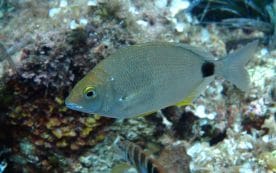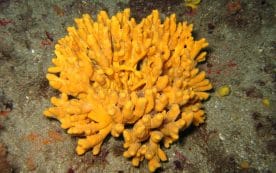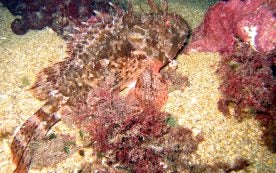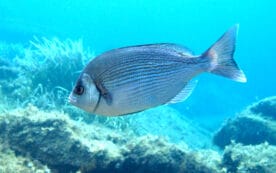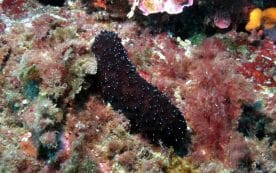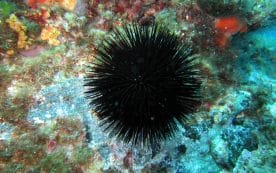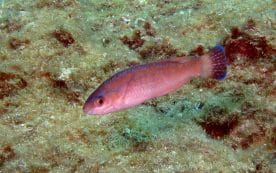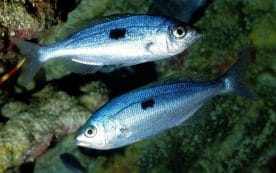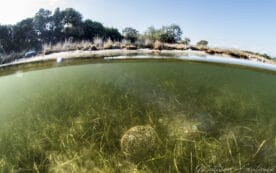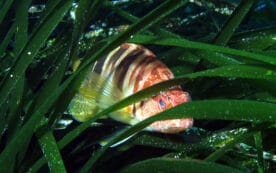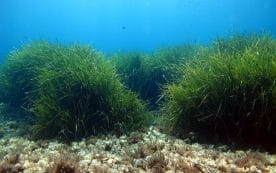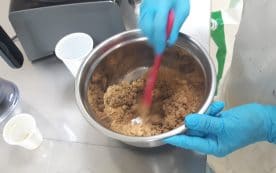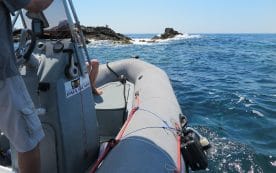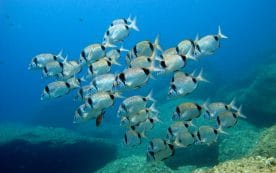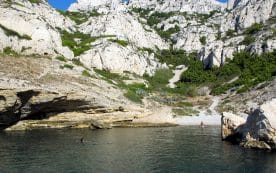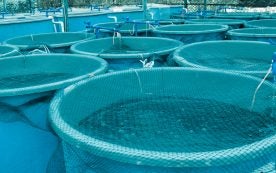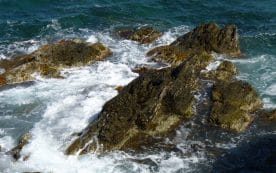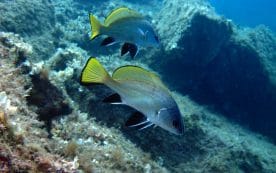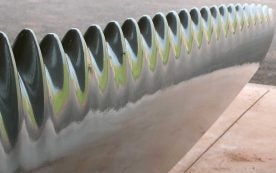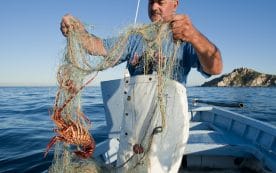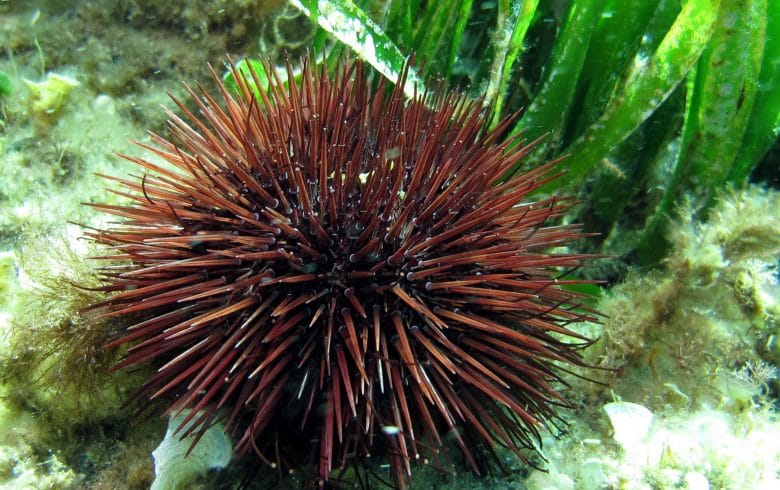
The purple sea urchin has very sharp spines that are about 3cm long on a 7cm test. It can be light or dark brown, greenish or purple in colour. Like other sea urchins, it grazes on algae using its jaw, which is a complex 5-toothed structure called Aristotle’s lantern after the Greek philosopher and physicist who first described it. During spawning, the males and females release gametes into the water where fertilisation occurs. The larvae live as plankton and then turn into young sea urchins that fall to the sea bottom. They occur on rocky bottoms and in Posidonia seagrass beds down to 100m below the surface. They are found all over the Mediterranean but not in the Black Sea, and are also seen in the Atlantic from the UK to Mauritania.
Phylum: Echinodermata
Class: Echinoidea
Order: Camarodonta
Family: Echinidae
Scientific name: Paracentrotus lividus
French: Oursin violet, Oursin commun, Châtaigne de mer
Spanish: Erizo marron
Italian: Riccio di mare comune
German: Steinseeigel

